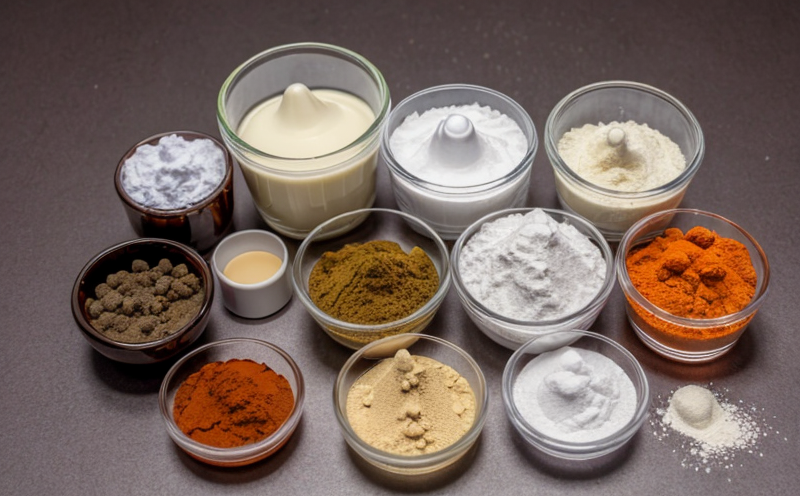Buffer Capacity Testing
Buffer capacity testing is a crucial analytical procedure in pharmaceutical formulation and excipient development. This method evaluates how much acid or base can be added to a given volume of buffer before there is a significant change in pH. It is essential for ensuring the stability, safety, and efficacy of drug formulations. In this context, buffers are critical components that maintain the desired pH levels within the body during the administration of drugs.
The testing process involves preparing a solution containing the excipient or formulation ingredient being evaluated. This solution is then titrated with either hydrochloric acid (HCl) or sodium hydroxide (NaOH), depending on whether it's an acid buffer or a base buffer, respectively. The amount of titrant required to change the pH by one unit is recorded as the buffer capacity.
This test is particularly important in pharmaceuticals because many active pharmaceutical ingredients (APIs) and excipients are sensitive to changes in pH. For instance, buffer stability can impact drug dissolution rates, bioavailability, and shelf life. Additionally, excipients like sodium citrate or hydroxypropyl cellulose often serve as buffers in formulations.
The standard methods for buffer capacity testing include the use of potentiometric titration, which is precise due to its ability to measure pH changes accurately. This method ensures that even small variations in buffer performance are detected. The International Organization for Standardization (ISO) and American Society for Testing and Materials (ASTM) provide guidelines for these procedures.
Understanding the buffer capacity of an excipient or formulation is critical for quality assurance and control. For example, a high buffer capacity might indicate better pH stability under varying conditions, which can be beneficial in ensuring consistent drug performance across different environments and storage durations. Conversely, low buffer capacity could suggest that the formulation may not withstand acidic gastric conditions without significant pH changes.
In summary, buffer capacity testing is a fundamental step in developing robust pharmaceutical formulations. It helps ensure that excipients and other ingredients perform as expected under various conditions, thereby enhancing drug product quality and patient safety.
Why It Matters
The importance of buffer capacity testing cannot be overstated, especially within the context of pharmaceutical testing. Buffers play a vital role in maintaining pH balance during drug administration, which directly impacts the efficacy and safety of medications. For instance, certain APIs are unstable at extreme pH levels, necessitating the use of buffers to protect them.
- Enhanced Drug Stability: Buffer capacity ensures that formulations remain stable over time, preventing degradation and maintaining API integrity.
- Better Bioavailability: Stable pH conditions contribute to improved absorption rates, enhancing drug efficacy.
- Patient Safety: Ensuring proper buffer performance reduces the risk of adverse reactions by avoiding excessive pH shifts in patients’ bodies.
Moreover, buffer capacity testing is a regulatory requirement for many pharmaceutical products. Compliance with these standards ensures that formulations meet stringent quality and safety benchmarks set forth by governing bodies like the FDA (Food and Drug Administration) and EMA (European Medicines Agency).
In conclusion, this test is indispensable in safeguarding drug product integrity and patient health.
Benefits
The benefits of conducting buffer capacity testing are manifold. Firstly, it provides critical insights into the stability and performance characteristics of excipients and formulations under varying pH conditions. This information is invaluable for optimizing formulation design and ensuring that products meet regulatory requirements.
A key benefit lies in its role as a predictive tool for potential issues during drug development and manufacturing processes. By identifying weak points early on, manufacturers can implement corrective actions to enhance product quality. Additionally, buffer capacity testing supports compliance with industry standards, such as ISO 3174, which specifies titrimetric methods of chemical analysis.
Another advantage is the ability to tailor excipients specifically for a drug’s unique requirements. For example, if a particular API requires a specific pH range for stability, choosing an appropriate buffer can be the difference between a successful product and one that fails in clinical trials or post-marketing surveillance.
Lastly, this testing contributes significantly to reducing costs associated with rework and recalls by identifying potential problems early. This proactive approach not only saves time but also minimizes financial losses due to defective products reaching market shelves.
Why Choose This Test
- Precision: Potentiometric titration allows for highly accurate measurements of buffer capacity, ensuring reliable results.
- Regulatory Compliance: Adhering to ISO and ASTM standards ensures that your formulations meet all necessary regulatory requirements.
- Enhanced Product Quality: By maintaining optimal pH levels throughout the lifecycle of a drug product, you ensure superior quality and effectiveness.
- Patient Safety: Reducing risks associated with pH-induced side effects enhances patient safety and satisfaction.
Conducting buffer capacity testing is an investment in both product quality and patient health. It provides essential data that can guide formulation decisions, optimize manufacturing processes, and ensure compliance with regulatory standards.





